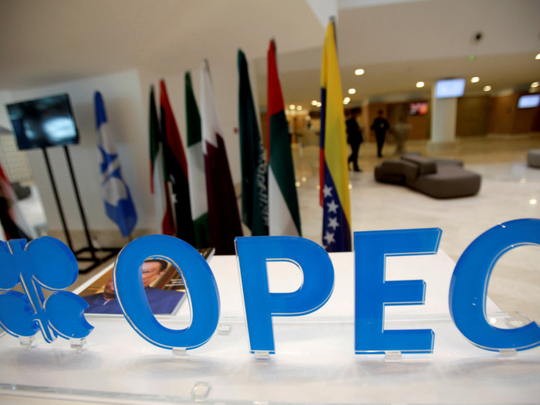
One thing is clear from Opec’s agreement to reduce production: The leaders are evolving their approach as they try to cope with new structural market realities that have reduced the group’s collective earnings by more than half over the last two years.
Success, however, depends on how they manage some old familiar challenges. And the most realistic initial outcome is a range-bound market.
After protracted negotiations, Opec announced the first such production-cutting deal, which will lower its total output starting January 1 by 1.2 million barrels a day to about 32.5 million barrels. To get there, three members agreed to account for more than 60 per cent of the total cut, with Saudi Arabia reducing its production by 486,000 barrels a day, the UAE by 139,000 and Kuwait by 131,000.
At first glance, this appears to be a return to an approach that Opec had followed for decades in which Saudi Arabia, along with its close allies in the Gulf Cooperation Council, play the role of “swing producers” (that is, they delivered the largest output adjustment in a counter-cyclical fashion, reducing output when prices were heading too low and increasing it when prices were heading too high).
A Saudi Arabian-led Opec abandoned this practice in November 2014 on the grounds that the most likely result would be a costly long-term loss of market share to a combination of non-compliant Opec members, non-Opec suppliers and, especially, non-traditional sources (primarily shale). Yet, this time, Opec has included three notable elements aimed at adapting a production-cut agreement to the realities of today’s oil markets.
First, non-Opec producers will join the effort with a 600,000-barrel-a-day cut. While the exact details will be worked out in the coming days, this component is anchored by a commitment approved by President Vladimir Putin of Russia to account for around half of the total.
Second, when it comes to the allocation within Opec, the cartel has taken an unusually differentiated approach. Some wildcard members that are embroiled in conflicts, such as Libya and Nigeria, are explicitly excluded from the agreement. Iran sidesteps a cut as it continues to normalise its output level after the lifting of sanctions. And Indonesia’s Opec membership is said to have been suspended.
Third, to make more transparent and predictable the influence on the market of a particularly volatile Iraq — a member that has surged to the top echelon of Opec producers — the authorities there have agreed to a reduction of 210,000 barrels a day.
Opec hopes these adaptations will help anchor a viable midpoint between the challenged old-style approach and the complete abandonment of both output limits and the role of swing producer. The bet will pay off if both Opec and non-Opec oil producers become more disciplined and compliant, having been sufficiently chastened by the sharp decline in revenues and international reserves.
And the agreement needs to be supported by stronger and more timely monitoring and verification processes.
Still, the deal won’t eliminate the influence on prices of new, non-traditional suppliers of energy. As a result, short of a really large supply disruption, we shouldn’t expect a quick return to prices of $70-plus, let alone the $100 level that prevailed just a few years ago.
Indeed, with more shale supplies ready to enter the market, the best that Opec can reasonably hope for is to initially stabilise prices in the $50 to $60 range.
Although it was historic, last week’s agreement does not mark a return to the golden days of Opec. Rather, it is part of a gradual, bumpy adaptation to a new energy order.
This change gives their members more time to implement basic structural changes at home that reduce will the heavy overall economic reliance on energy, generate non-oil revenues, and rationalise budgetary outlays. Without that window, more countries than Ecuador, Nigeria and Venezuela would face the risk of disorderly and damaging adjustments imposed by blunt market forces.
— The writer is the chief economic adviser at Allianz SE and chairman of the President’s Global Development Council, and he was chief executive and co-chief investment officer of Pimco. His books include “The Only Game in Town: Central Banks, Instability and Avoiding the Next Collapse”












